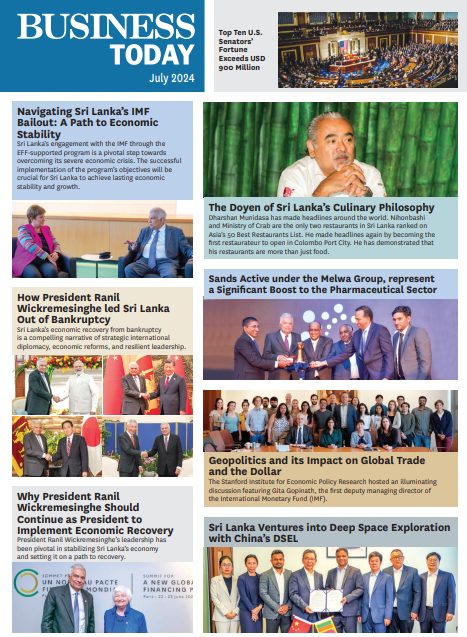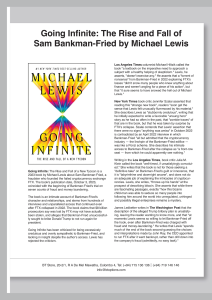
Ceylon Tea has a fascinating history of 150 years. An industry that was started by the British, Sri Lanka has impressed its identity and brand – Ceylon Tea – on the world map. As Sri Lanka celebrates the milestone of 150 years of Ceylon Tea, Anselm Perera, Chairman, Colombo Tea Traders Association speaks on the year long celebration and the International Tea Convention in Colombo, while sharing his hopes for the future of Ceylon Tea.
By Udeshi Amarasinghe
Photography Mahesh Bandara and Geeth Viduranga
Ceylon Tea is celebrating 150 years in August. What is the significance of this achievement?
The tea industry emerged out of the coffee blight disaster of 1867 in Ceylon, when a young Scottish planter, James Taylor began tea on an experimental plot of 15 acres in Loolecondera estate, which was previously a successful coffee plantation. His experiment was soon followed by many who contributed to create this great tea industry of Ceylon. Throughout the last 150 years since 1867 to date, tea has helped sustain the economy of Ceylon and generated employment to almost ten per cent of our country’s population. The feeling of satisfaction and fulfilment of providing employment to such large numbers, weighs far beyond the satisfaction one achieves out of making profits from a successful business venture. As we know, unemployment is the root cause of corruption. Gainful and content employment translates into peace, nonviolence as well as economic development. The industry has survived through many turbulent periods, such as the Southern insurrection and the subsequent Northern conflict of 30 long years.
The tea industry has contributed greatly to assist the stability of the economy. In fact, responsible officers of the administrative and financial circles of the state have seriously acknowledged that apart from the income generated by this sector, the taxes paid by the exporters alone is around four billion rupees per annum, which exporters pay upfront at time of export and this is a substantial revenue for the country. Every week an average of seven million kilos of tea is sold by public auction. When bulk teas are exported in the form of a commodity, a total amount of 17.50 rupees per kilo needs to be paid out in advance for duty, cesses and for the promotional levy. As an incentive for value added consumer packed exports the ten rupee duty is exempted from levies and only 7.50 rupees per kilo is paid.
The Tea Industry Has Contributed Greatly To Assist The Stability Of The Economy. Apart From The Income Generated By This Sector, The Taxes Paid By The Exporters Alone Is Around Four Billion Rupees Per Annum.
At the time I joined the trade in the late 60s, the major exporters were the western organisations and the multinational brand owners who supplied tea as a commodity to their parent companies in the Western world. After the nationalisation of the tea industry in the early 70s, the major bulk buyers shifted their buying operations to Kenya and other African countries where the multinationals invested in plantations to replace their supply sources, which they lost when plantations in Sri Lanka were nationalised. Since then we rapidly lost our major British market share. We have to-date never been able to re-gain these lost markets.
How has Ceylon Tea evolved over the 150 years?
In the early days due to lack of packaging facilities, only small volumes left our shores as finished products. In the present day, large investments in modern packaging facilities have improved our value added tea exports upto and over 45 per cent of our total production. Since we produce over 300 million kilos of tea annually, we cannot expect our entire volume of tea to leave our shores in value added products.
The Tea World Has Over The Years Developed Many Sophisticated Packaging Hubs. Germany Is A Classic Example Of A Centre That Adds Great Value To Teas That They Import, Blend And Re-Export.
The tea world has over the years developed many sophisticated packaging hubs. Germany is a classic example of a centre that adds great value to teas that they import, blend and re-export. Their value addition to tea far exceeds the total value of tea exported from Colombo even though they are purely tea importers and exporters. From experience we know that importing countries always bargain when teas are offered in bulk or in value added packaging from countries of origin whilst value added teas from packaging hubs overseas are accepted without hesitation.
Can you explain briefly to us your thoughts on the Industry ?
With the increasing cost of living, the levels of the minimum wage in Sri Lanka have moved up to higher levels. This contributes to the higher cost of production of our tea. Ceylon Tea was considered to be one of the best across the globe for its taste, quality and consistency. Teas bearing the lion logo were endorsed as the finest quality Ceylon Teas.
In order to maintain our status and competitiveness our way forward in my opinion is to improve our quality to the best possible levels and market our products as premium quality teas achieving much higher prices so as not to market our products below cost of production during high cropping seasons and periods of low demand. There is always a market for fine quality teas amongst the high income consumer groups.
Our policy for the future should be to produce lesser volumes and higher quality products whilst avoiding the production of poorer teas as competing with producers in India, Kenya and China for fair average teas is not a possibility with our higher labour costs and lower yields.
The strategy adopted by Japan, Taiwan and Korea of producing only fine quality teas achieving high levels of prices should be the way forward for fine quality Ceylon Teas beyond our 150 years.
What are the events planned for the celebrations?
As you know, the sesquicentennial celebrations commenced in January this year. James Taylor, the father of Ceylon Tea was felicitated on January 19th by placing a large bust of James Taylor sculptured in cultured marble by Prof Sarath Chandrajeewa at the head office of the Sri Lanka Tea Board in Colombo.
We had a series of educational programmes organised by Prof Sarath Samaraweera in the different tea growing regions to encourage the children of these plantations to seek future employment in the tea industry which, their parents helped to develop.
The World’s Largest Tea Party was held in July starting from the land of the rising sun in the far east and ending in the setting sun in the furthest corners of South America. Our Sri Lanka High Commissions, Embassies, Consulates and our exporters, agents, buyers and retailers were all organised to hold tea parties starting at the precise time of five in the evening in each time zone offering tea and specially created Earl Grey and ginger biscuits by the oldest biscuit manufacturers in Sri Lanka, Maliban Biscuits who generously sponsored the biscuits with a considerably heavy investment by offering the biscuits manufactured in a special mould, which carried the sesquicentennial Ceylon Tea logo embossed into every biscuit.
Two special decorative display cartons for Earl Grey and ginger biscuits were created for this purpose by Maliban which is greatly appreciated by all of us in the tea trade. The Global Tea Party was a resounding success with very heavy participation all across the globe.
We Should Look At A Very High Standard Of Ceylon Tea, Offering Our Products To Those With Sophisticated Fine Taste By Improving Our Quality Standards And Also Achieving Much Higher Price Levels With A Greater Contribution To Our Economy.
For the first time in Sri Lanka a ten rupee coin was minted by the Central Bank to celebrate a Ceylon Tea event. The face of the coin carried the logo of the sesquicentennial of Ceylon Tea. Two postage stamps of 35 rupee denomination were issued specially by the Postal Department in celebration of the sesquicentennial in July.
A very exclusive book titled “Ceylon Tea – The Trade That Made A Nation” written by Richard Simon with picture research by Dominic Sansoni and designed by Sebastian Posingis was launched before an audience of over 1,200 at the BMICH, followed by a grand charity auction selling tea memorabilia made of sterling silver, to raise funds for tea plantation childrens’ educational, health and welfare charity projects.
An International Tea Convention of high standards will be held from August 9-11 with a record participation of 500 international and Sri Lanka delegates. Thereafter we plan two sensational charity projects benefiting tea estate children – one in the high grown regions and another in the Ruhunu/Sabaragamuwa region.
What do you hope to achieve through these events?
With all these events we plan to achieve greater prominence and popularity of Ceylon Tea.
What is the future of Ceylon Tea and your message to the industry ?
As we all know, we enjoy higher standards of living in Sri Lanka in comparison to early days. We have come a long way since simple calculators to more sophisticated computers and now moved on to the technologically advanced smart phones of superior standards.
In a similar manner, we should look at a very high standard of Ceylon Tea, offering our products to those with sophisticated fine taste by improving our quality standards and also achieving much higher price levels with a greater contribution to our economy.







